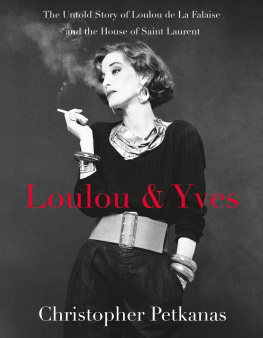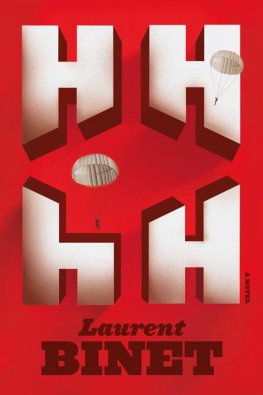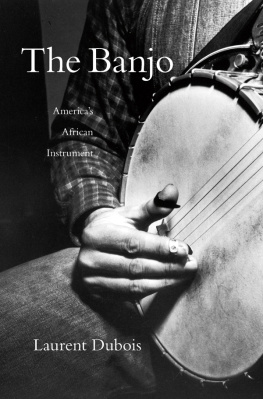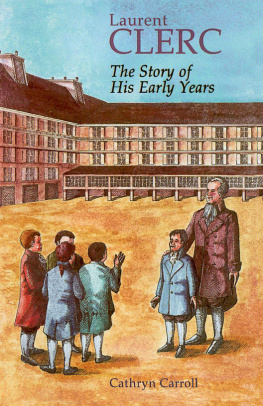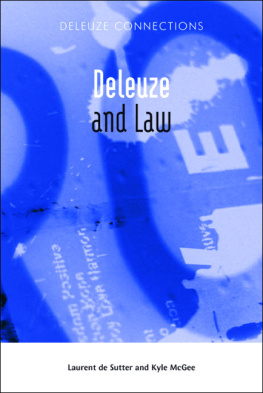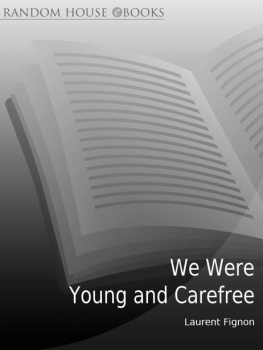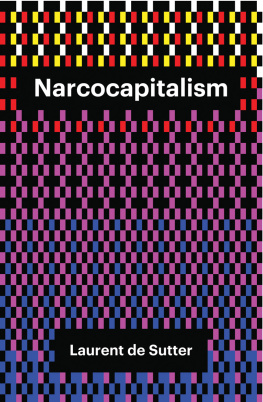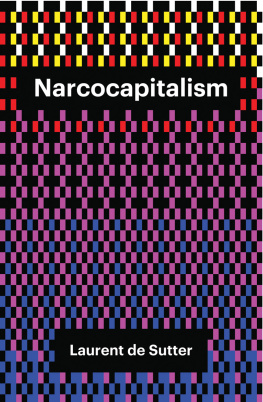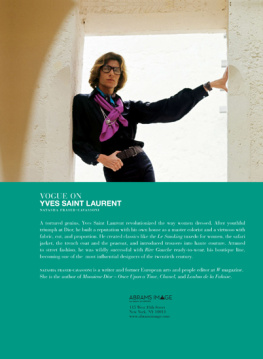Loulou & Yves
The Untold Story of
Loulou de La Falaise and
the House of Saint Laurent
Christopher Petkanas

The author and publisher have provided this e-book to you for your personal use only. You may not make this e-book publicly available in any way. Copyright infringement is against the law. If you believe the copy of this e-book you are reading infringes on the authors copyright, please notify the publisher at: http://us.macmillanusa.com/piracy.
With gratitude to him who woke me.
Plus chic, tu meurs.
fashion bromide
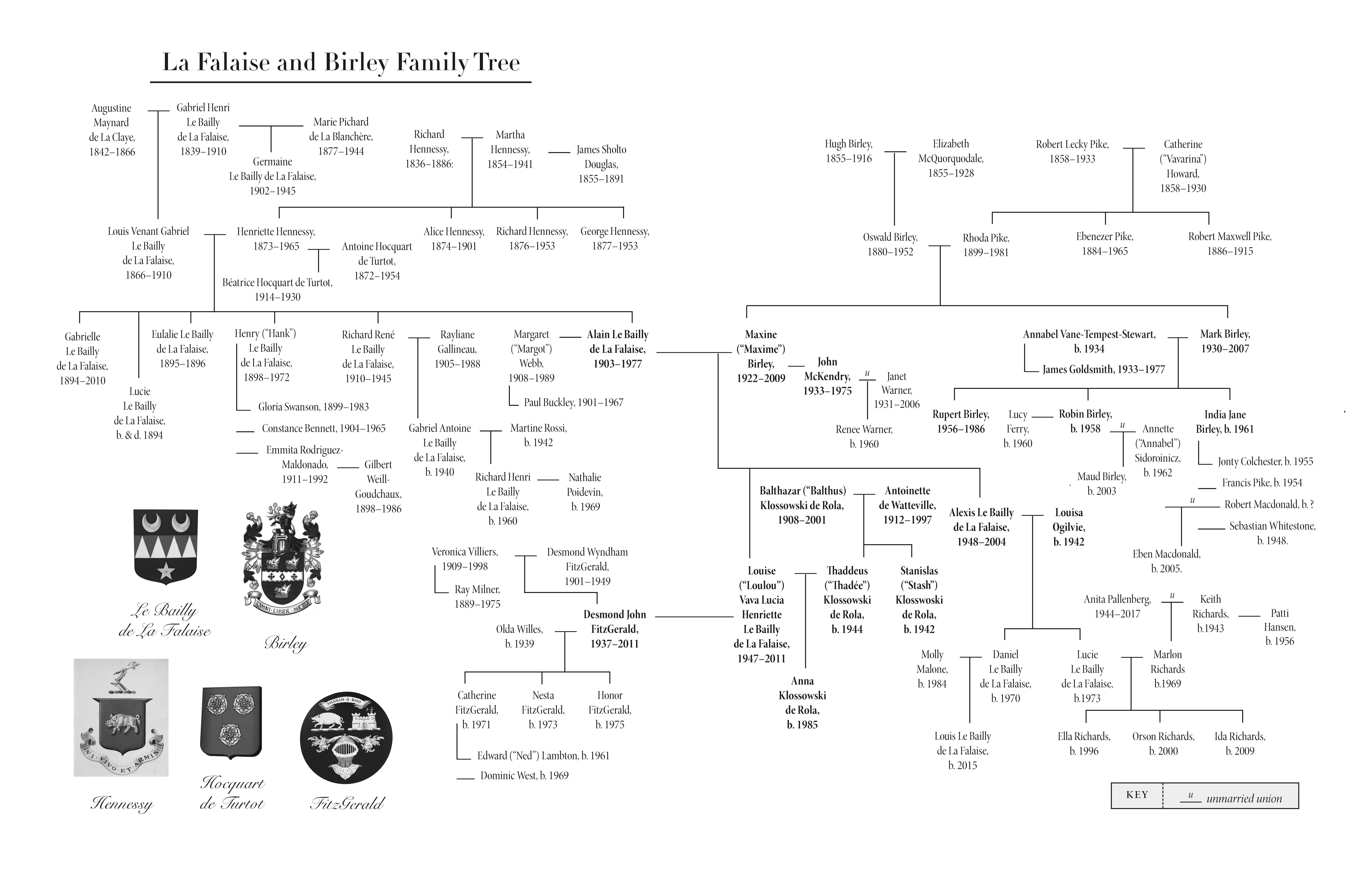
Loulou de La Falaise did not lack for publicity, generated by her often painfully close personal and professional relationship with Yves Saint Laurent. More than four decades of ecstatic party photos, self-adulating Newton portraits and how-she-wears-it stories culminated in 2011 with six pages in Paris Match, the most widely read publication in France, and the ghoulishly unequivocal title in tall type trumpeting La Deuxime mort de Saint LaurentThe Second Death of Saint Laurent. Louise Vava Lucia Henriette Le Bailly de La Falaise was sixty-four.
The outlines of Saint Laurent and Loulous friendship and collaboration are easily recited by people in the fashion business, and with just a little more effort by those with only a glancing rapport with what used to be called the womens pages. Founding his house in 1962, Saint Laurent was well on the way to claiming his due when he met Loulou six years later. En toute modestie, Saint Laurent agreed with the mature view, universally held, that he was one of the three greatest designers of the twentieth century, Chanel and Dior bringing up the rear. Hadnt he put women in trench coats and see-through blouses and safari gear and smokings and cast them in a petticoated excess of taffeta, challis and passementerie as RRPsRich Russian Peasants?
At his elbow for thirty years was Loulou, his creative right hand, the dream maker behind all those lip-smackingly flamboyant accessories, and his musea designation she found so wanting, it could make her cuffs rattle. In and out of the studio-hothouse, fingers freighted with turquoise boulders, a nautilus shell the size of a football weighting her neck, she was the one whispering in Yvess ear, talking him off the ledge, propping him up, cajoling, prodding, holding court at Club Sept, walking Moujik, trawling the souk, lifting the bottle, rolling the joints, snorting, playing dress-up, painting rainbows, wrapping the turbans, draping the shawls, conjuring the bijoux de fantaisie in unsuspected materials like cork and cardboard that tipped the Saint Laurent look into something else.
On the theory that everyone loves a cocktail party, and because people with a drink in their hand tend to be candid, Loulou & Yves traces Loulous life chronologically through the memories of more than two hundred voices: husbands, lovers, extended family, friends, enemies, slightly less bitter detractors, colleagues, groupies, Yves, pundits, hangers-onand Grace Jones. Readers mingle at the party as invited guests, listening in and collecting clues as the narrative unfolds, nostalgia and fact colliding with wishful thinking and score settling. Warring accounts of the same event are part of the charm of a supple literary form, oral biography, that allows the interweaving of diary entries, letters and press clippings with the testimonies that flow from more than one hundred and fifty original interviews. Others from the vaultsbooks, newspapers, magazinesplump the story line. The voices speak for themselves, uncensored, in their own words, each in his own idiosyncratic manner. Some of the conversations overheard are loving, others bitchy, as only the fashion world can be.
The precedent here will be obvious to many. Edie (1982), Jean Stein and George Plimptons life of the doomed Warhol superstar Edie Sedgwick, ennobled the spontaneous quality of the spoken word while using the kaleidoscopic flicker technique of films, in which a series of quick images of considerable variety provides an effect of wholeness (Plimpton). He coined the metaphor of oral biography as cocktail party, the social forum where Loulou came most alive, deploying her legendary chien, her exalted level of chic, to play to her constituency.
ROSI LEVAI She was the root of all evil.
LOULOU DE LA FALAISE [She was] the first hippie.
MARGALIT FOXRhoda, an Irish beauty, was considered an eccentric even by the elastic standards of the British Isles. Lady Birley often made lobster thermidor, for instance, and then fed it to her roses.
MAXIME DE LA FALAISE She would make fish stew and sometimes would forget that she was making it for the garden. So she would add a bit of cognac, some garlic and spices. The roses would almost cry out with pleasure She was the only woman in Ireland allowed to ride to the hounds, dressed in a suede jacket and Hindu turban.
HUBERT DE GIVENCHY In her Mexican petticoats and piles of necklaces, Rhoda Birley made Millicent Rogersenough to know and admire them all. Rhoda married Sir Oswald, an English portraitist favored, as you know, by society and the Court of St. James. Maxime married a French count.
HAMISH BOWLES[Loulou] was the true descendant of a line of formidably stylish women. Through her birthright she had inherited the whimsy and poetry of Ireland, the pragmatism and eccentric flair of England, and the chic and dash of France.
GEORGINA HOWELLFor sheer longevity as aristocrats of style, the de La Fa-laise family are the most famous of fashion dynasties Maxime was a young crop-headed comtesse, tall and thin enough to carry off the most extreme clothes of an extreme period With her rusty bobbed hair, scornful green eyes and feline face, Loulou has, since her first meeting with Saint Laurent in 1968, inhabited the world of inspiration between the couturiers dreams and the first snip of the scissors. Then there is Lucie small, with fine features and a cameo profile.
JANE ORMSBY GORE Rhoda, Maxime, Loulouthey were all quite original, werent they? Not sort of Bob Basic, misses twinset and pearls, were they?
WILLY LANDELS I have a terribly funny image from the sixties. Desmond FitzGerald was working in the V&A furniture department. Rhoda, Maxime and Loulou were seated on a sofa in his flat in Pont Street, all three immensely chic, all three smoking joints.
JOSPHINE RINALDI Maxime gave a party in Paris in the late forties, greeting guests stretched out on a bed while covered in fresh flowers. Underneath she was naked. Rhoda arrived at the opera one night in an evening dress, carrying a marketing basket with leeks spilling out, carrotseverything she needed to make pot-au-feu. Loulou was practically the sanest of the three.

